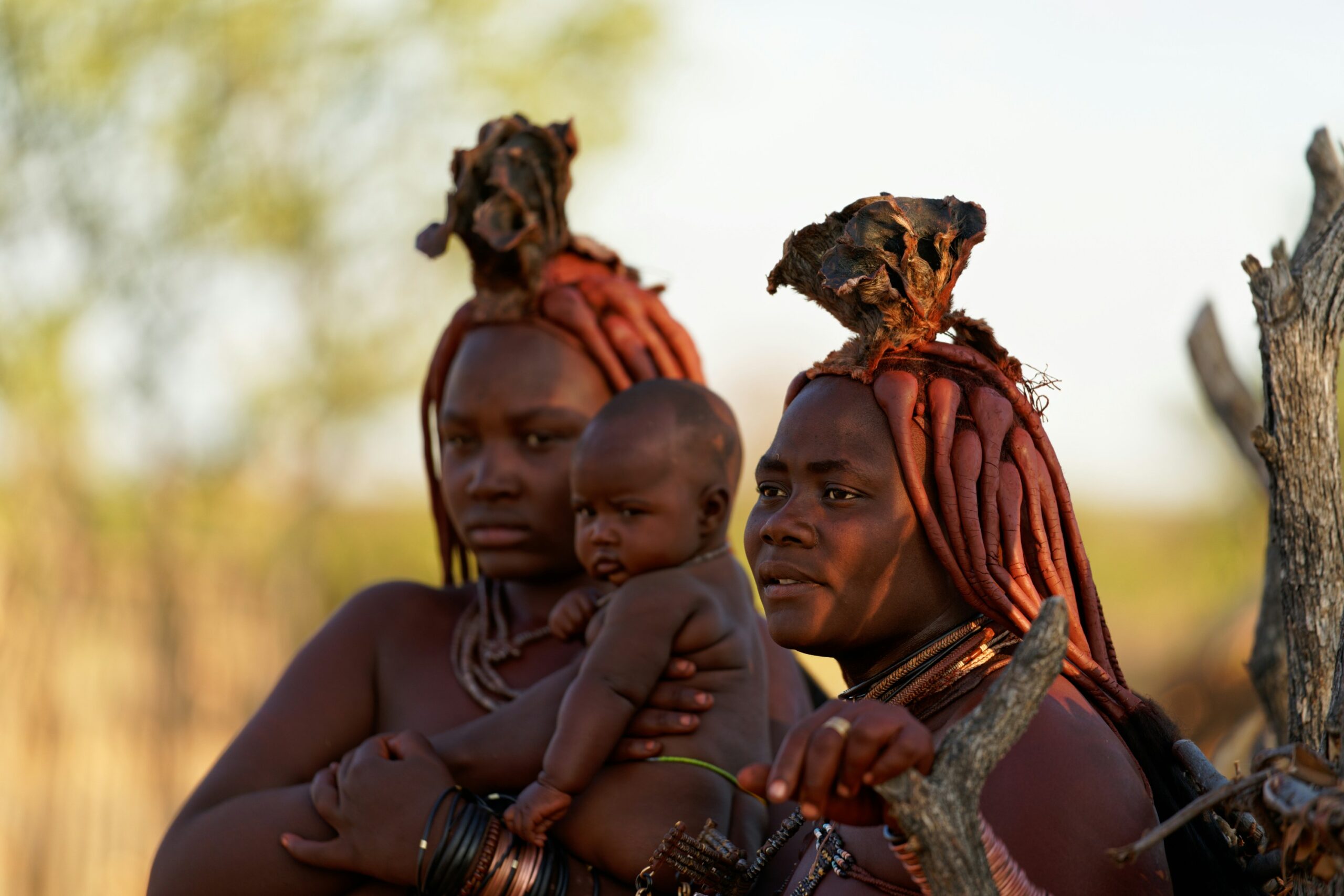.
🛖 Who Are the Himba?
In the remote, arid region of Kaokoland (also known as Kunene) in northwestern Namibia, live the Himba people—one of Africa’s most iconic and enduring tribes. With their ochre-covered skin, intricate hairstyles, and deep connection to tradition, the Himba are known for maintaining a semi-nomadic, pastoral lifestyle that has remained largely unchanged for centuries.
They are considered descendants of the Herero people, having split off generations ago to live in more isolated regions of Namibia. The Himba speak Otjihimba, a dialect of the Herero language, and are deeply tied to their land, livestock, and ancestral beliefs.
🧬 A History of Strength and Adaptation
The Himba’s story is one of resilience. Originally migrating from Central Africa hundreds of years ago, they settled in the harsh terrain of the Kaokoland region. Over the centuries, they’ve endured colonial pressures, drought, and encroaching modernization, yet managed to preserve their identity.
During the early 20th century, they suffered greatly under German colonial rule and later South African occupation, including the forced relocation of some Himba and land loss. However, due to the isolation of Kaokoland, many communities avoided full assimilation and continued to live according to traditional customs.
Today, many Himba still move with the seasons, care for their cattle, and practice ancestral rituals—offering a rare living link to Africa’s pre-colonial past.
💫 What Makes Visiting the Himba a Cultural Experience Like No Other?
1. Living Traditions
Visiting a Himba village isn’t just about observing—it’s about witnessing a way of life that honors ancestry, environment, and spiritual balance. Women spend hours each day applying otjize—a red paste made from butterfat and ochre—to their skin and hair, a symbol of beauty and protection from the sun. Hairstyles, jewelry, and dress all signal age, social status, and marital stage.
2. Authentic Storytelling
Sitting around the fire, you may hear oral history passed down through generations. The “okuruwo” (ancestral fire) burns continuously and is central to Himba spirituality. It connects the living to their ancestors—guiding decisions, rituals, and healing ceremonies.
3. Immersive Connection to the Land
Kaokoland is raw and untouched. Your journey into Himba territory often involves rugged drives, dry riverbeds, and stunning desert mountains. The landscape itself becomes part of the experience—vast, ancient, and humbling.
4. A Respectful Exchange
Cultural visits are often arranged with local guides or tribal liaisons, ensuring that interactions are ethical, respectful, and mutually beneficial. Visitors may offer small gifts like maize meal, sugar, or tea (not money), supporting the community without disrupting traditional life.
🙏 Responsible Cultural Tourism Matters
The Himba are welcoming, but it’s important to approach with humility and respect. You are entering sacred, living communities, not staged attractions. Travel with local operators who work directly with Himba leaders, and ask permission before taking photographs.
✨ Final Thoughts: More Than a Visit—A Human Connection
Visiting the Himba people of Kaokoland isn’t just a cultural excursion—it’s a deeply moving human experience. It challenges your understanding of modern life, celebrates the power of tradition, and leaves you with a renewed appreciation for cultural diversity and resilience.
You won’t just leave with photos—you’ll leave with perspective.
📧 Ready to include a Himba cultural visit in your Namibia safari?
Email us at book@zangadadmc.com to start planning your custom journey through Namibia, including ethical, respectful Himba village visits guided by local experts.




